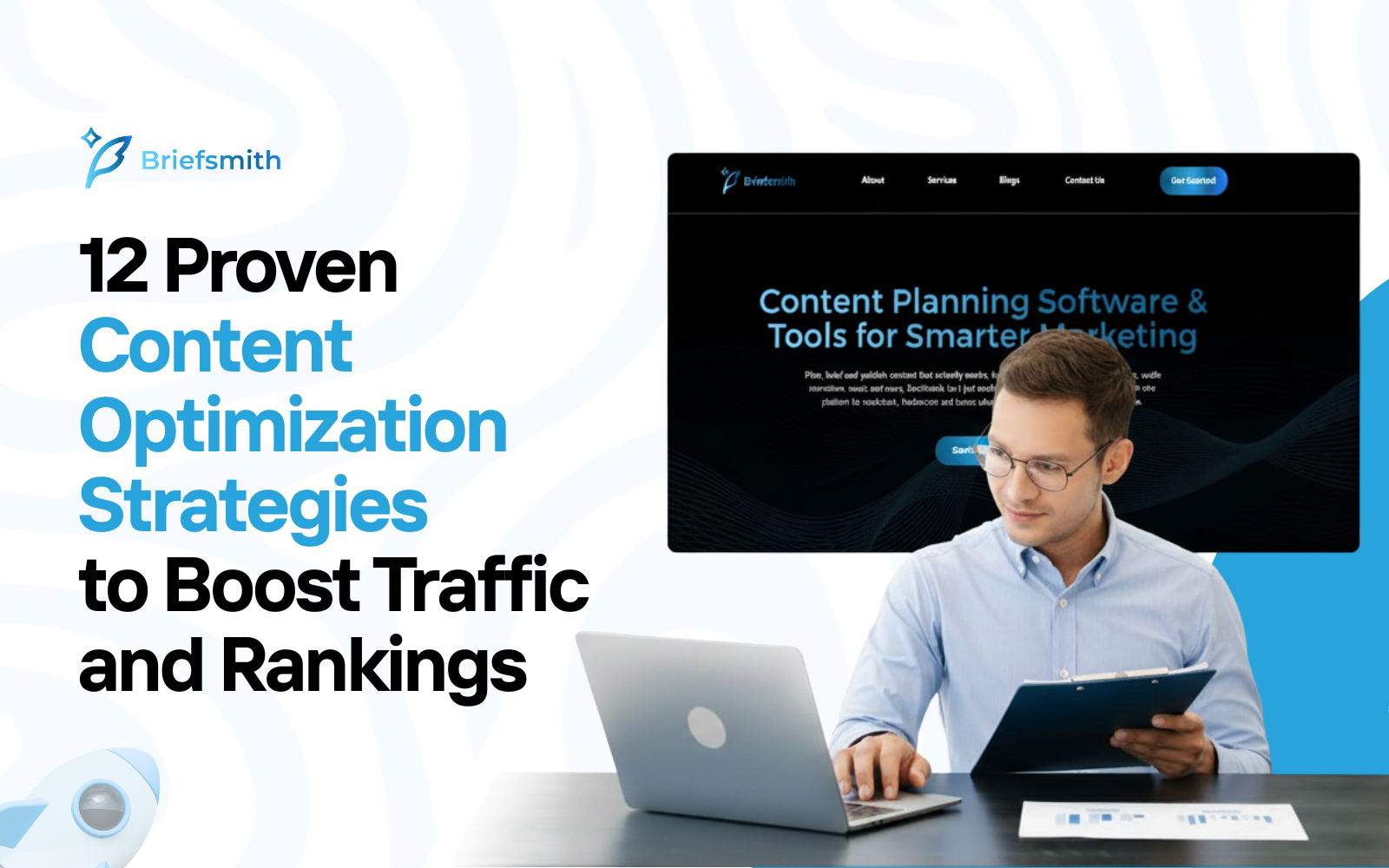How to Create an SEO Content Brief That Ranks in 2025

SEO in 2025 is no longer about tricking algorithms. It’s about helping them help you. Search engines are smarter, readers are pickier, and attention spans are microscopic. So if you’re writing content without a solid SEO content brief, you’re basically flying blind.
Let’s fix that.
This guide will walk you through how to create a step-by-step SEO content brief that gets your blog posts seen, clicked, and ranked, even in Google’s ever-changing landscape.
What Is an SEO Content Brief and Why It’s Non-Negotiable
Think of an SEO content brief as your GPS for writing high-performing content. It tells you:
- What topic to cover.
- Which keywords to target.
- How long it should be.
- Who it’s for.
- What intent it should serve.
Without it, you risk writing something that’s well-crafted but invisible online.
A solid brief bridges the gap between keyword research and high-ranking content outlines, turning ideas into content that both readers and algorithms love.
Step 1: Start with Search Intent
Before you even touch a keyword tool, figure out why people are searching.
Are they looking to learn, compare, or buy?
Here’s a quick breakdown:
- Informational: “What is an SEO content brief?”
- Navigational: “Briefsmith SEO brief tool”
- Transactional: “Buy SEO content software”
If your content doesn’t match the intent, it won’t rank at all, no matter how many keywords you sprinkle in.
Pro tip: Check the top 10 search results for your keyword. This is going to let you know what exactly needs to be written for the audience. If they’re all how-to guides, your post should be one too.
Are you looking for a deep dive on intent? Google’s Search Quality Evaluator Guidelines explain how their system rewards “helpful content.”
Step 2: Do Smart Keyword Research
Keyword search has to be the most integral part of a SEO content brief. Nevertheless, here’s where most people go wrong. They end up picking keywords by volume, not by value.
A good SEO content brief includes:
- Primary keyword: The main topic (e.g., “SEO content brief”)
- Secondary keywords: Supporting terms (like “how to write SEO briefs,” “step by step SEO content brief”)
- Semantic keywords: Variations Google associates with your topic (“SEO ranking content process,” “writing high ranking content outlines”)
Use tools like Ahrefs, Semrush, or Briefsmith’s built-in keyword assistant to find terms with a balance of search volume, intent, and ranking difficulty.
Step 3: Analyze the Competition But Don’t Copy It
Check the top-ranking pages for your keyword. Studying your competitors gives you an edge unlike any other
Look for patterns in:
- Headings and subheadings
- Content length
- Tone and structure
- What’s missing
Remember. Your goal isn’t to mimic them. It’s to outthink and outdo them.
For example, if competitors are all saying the same thing, add unique insights: a process, a visual, a data point, or your own experience.
Briefsmith’s content brief generator actually analyzes SERPs and competitor data for you. This aids in saving hours of manual work.
Step 4: Outline Your Content Like a Pro
A great outline is half the battle. If you have a structure that’s solid, your content would not go unnoticed.
Here’s a high-ranking content outline template:
- Introduction: Define the problem and hook the reader.
- Section 1: Explain the concept or process.
- Section 2: Add examples or steps (make it actionable).
- Section 3: Include visuals, data, or tools.
- Conclusion: Summarize with a takeaway or CTA.
Make your outline scannable. Use bullet points, short paragraphs, and logical flow.
You’re writing for humans, not just crawlers.
Step 5: Add E-E-A-T (Experience, Expertise, Authoritativeness, Trust)
Google’s ranking system now heavily weighs E-E-A-T. That means your content should clearly show the following:
- Experience: Real-world knowledge of your topic.
- Expertise: Proven skill or authority in your niche.
- Authoritativeness: Backed by credible sources or data.
- Trust: Transparent and fact-checked.
Cite reputable sources, link to recognized authorities, and include author bios when possible as it alleviates the credibility of your content.
Step 6: Optimize for Humans Then for The Algorithms
SEO content briefs are not just keyword lists, but they’re creative blueprints as well.
When writing, keep your tone clear, your sentences short, and your structure easy to scan.
Avoid keyword stuffing for it’s quite outdated and penalized.
Instead, weave your primary and secondary keywords naturally throughout headings, intro, and meta tags.
Remember, readability is part of SEO now. The more readable your content is, the better the traffic would be generated.
Step 7: Make Your Brief Reusable
The best briefs aren’t one-and-done. Once you’ve created a successful SEO brief template, replicate it. You can adapt the same framework for multiple topics or campaigns.
If you’re using Briefsmith, you can save your brief templates, repurpose your blog into narrated audio, or generate content outlines automatically. And the best part? You get to access it all from the same dashboard.
That’s how modern content teams scale without burning out.
Final Thoughts: SEO Briefs Are Your Secret Weapon
An SEO content brief isn’t busywork. It’s a strategy. It’s how you align writers, editors, and SEO pros around a single, data-driven goal ranking content that your audience actually wants to read.
If your process still feels clunky, that’s okay. Start simple. You don’t have to rush the process.
Define your keywords, intent, and outline clearly. The rest follows naturally.
Here’s the thing. SEO isn’t a one-and-done deal. Your SEO content brief should evolve as trends shift, algorithms update, and audience needs change. Revisit your briefs quarterly. Update keywords, refresh stats, and refine your structure. The more adaptive your process, the better your results.
With a tool like Briefsmith, updating briefs takes minutes, not hours. You can clone top performers, tweak your research, and push new content live without reinventing the wheel every time. Smart, efficient, and built for 2025.
Ready to Make SEO Briefs That Practically Write Themselves?
Stop guessing what Google wants.
Start building content that ranks and that too fast.
Don’t forget to try Briefsmith — the all-in-one SEO brief and content planning tool that helps you research, write, and repurpose smarter!
Related: The Best Content Planning Tools to Power Your Strategy in 2025



